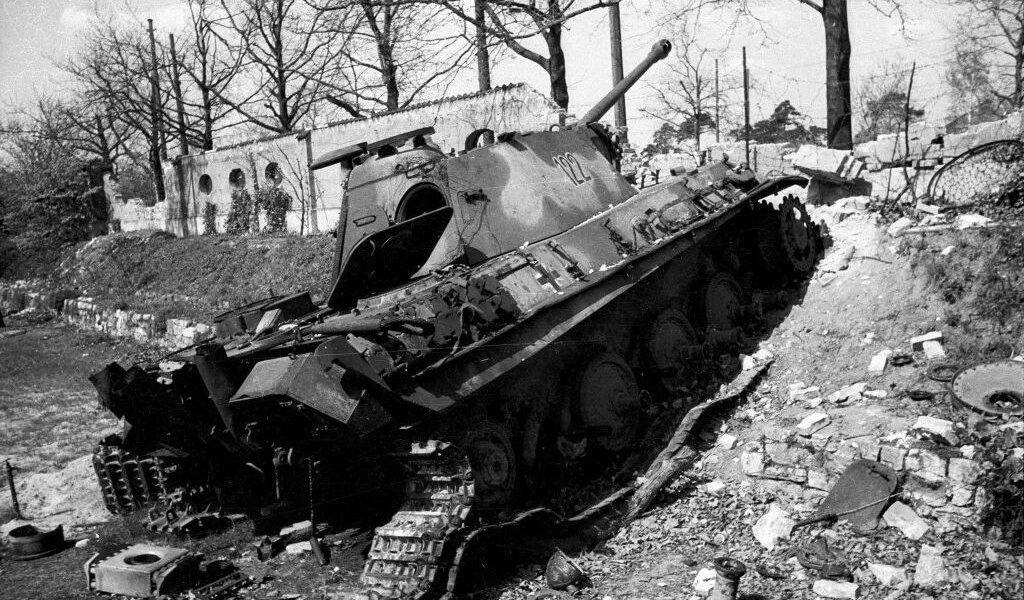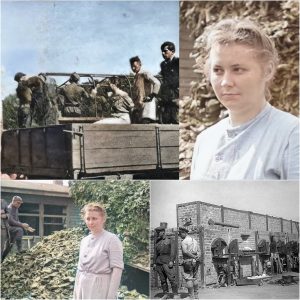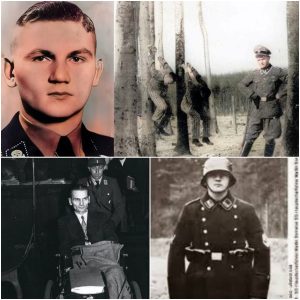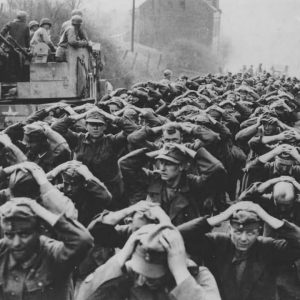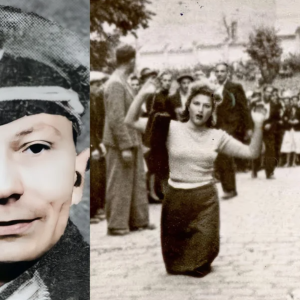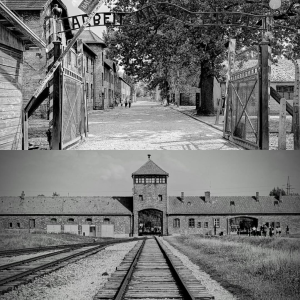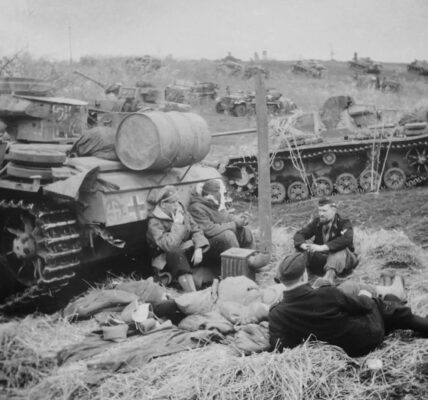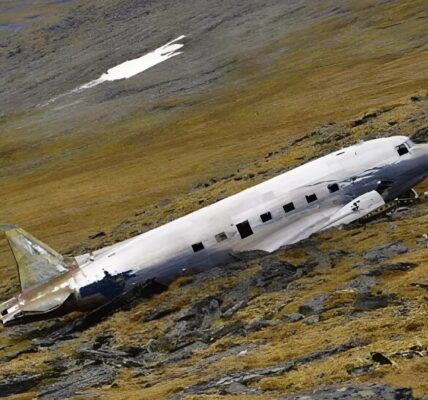Smashed German Panther tank: A silent testament to the last desperate battles of 1945!

In the spring of 1945, Europe lay in ruins. The major battles had been fought, and the last desperate attempts at defense of the Third Reich were taking place in the devastated streets and forests of Germany. In this photograph, we see a wrecked Panther tank, resembling a fallen giant. The once-feared war machine lies motionless and twisted, a symbol of the inexorable end of an era that had brought so much suffering and destruction to the world.

The Panther was one of the most modern and dangerous armored vehicles of the Wehrmacht. Originally intended as a counter to the Soviet T-34, it was a fearsome opponent with its strong frontal armor and accurate 7.5 cm gun. But even the most powerful tank cannot stop the course of history when the overwhelming Allied forces from the east and west advance relentlessly.

During the final days of the war, German units attempted desperate counterattacks to halt the enemy lines or at least delay their advance. Many tanks, like this Panther, were hastily repaired, often with makeshift spare parts. Young men, often barely 18 years old, sat inside these steel behemoths, driven by a mixture of fear, hopelessness, and a fanatical sense of duty.
The Panther in the photo appears to have been destroyed in a chaotic battle. The torn tracks, the deformed hull, the ripped-open hatch: they tell of a massive explosion, of shells or armor-piercing hits that could have extinguished the crew’s lives in a single instant. It is a silent but powerful moment, frozen in time.

The trees in the background stand bare, as if reflecting the despair of the final days of the war. Destroyed walls, fallen stones, and scattered remnants of equipment frame the scene. Perhaps this was once a garden or a park, a place of peace, now definitively transformed into a landscape of ruins.
A closer look reveals the cruel irony: the technology once intended for absolute domination now lies useless. The war, which began with such megalomania, ended with broken machines, deserted cities, and millions dead.
For many German soldiers, the collapse meant not only the end of the fighting, but also the loss of all illusions. In those final days, many fled, tried to surrender, or simply to survive. But the war spared no one, regardless of age, faith, or doubt.
Today, decades later, we view such images with a mixture of horror and quiet sorrow. They remind us where hatred, nationalism, and blind obedience can lead. The destroyed Panther tank is a monument, a silent witness to history.
It’s easy to view such photos merely as “military artifacts.” But behind every destroyed vehicle, every rusty piece of artillery, lies a human story. Perhaps a young radio operator thinking of his family, or a driver who would have preferred a normal life to driving to his death.
This Panther tells not only of technology or strategy, but of broken dreams, lost youth and the madness of war.
Today, such tanks are often seen in museums or memorials, where they serve as a reminder to visitors never to forget. Even though the steel appears cold and lifeless, the voices of the past echo within it.
Perhaps someone stands before this wreck, contemplating it silently, thinking of their grandfather or great-grandfather. Perhaps they feel the wind, hear the rustling of the leaves, and wonder how many tears have been shed here.
The Panther was once a symbol of German engineering, speed, and firepower. But in the end, all that remained was a wreck—a monument to the senselessness of war.
May we learn from these images. May we have the courage to preserve peace before it is too late again. For in the charred remains, in the shattered chains and burnt steel plates lies a lesson that concerns us all: war destroys not only cities and armies, but also souls.
This panther, half-buried, torn, and silent, tells a soundless story—the story of a Europe on the brink and a Germany living through its darkest hour. May it warn us never to go down that path again.
